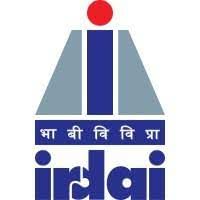UPSC Daily Current Affairs- 1st May 2023 | Current Affairs & Hindu Analysis: Daily, Weekly & Monthly PDF Download
GS-I
Bihan Mela of Kondh Tribals
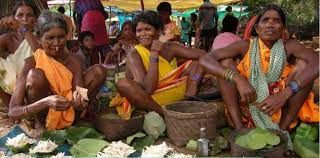
Why in News?
Since 2019, the Kondh tribe in Nayagarh district, Odisha has been celebrating the Bihan Mela, or the seed festival, to promote the revival of indigenous farming.
Bihan Mela
- This event involves the collection and preservation of indigenous seeds, and farmers from 40 villages in Dasapalla block participate in the festival.
- After harvesting kharif crops, women collect the seeds of indigenous varieties and store them in earthen pots.
- On a designated day in December, they decorate the pots with red and white motifs, place them in a bamboo basket and carry them on their heads to the village where the fair is being organized.
- Men accompany them, beating drums and other traditional instruments.
Objectives
- The seed festival was introduced to help farmers return to their traditional ways of farming, like mixed-cropping, which is more resilient to erratic rainfall and pest attacks.
- In recent years, farmers have abandoned native crops and varieties that are naturally resistant to pests and better suited to the region’s climate.
Commercialization through this festival: Seed Bank
- To facilitate access to indigenous seeds, Nirman, a non-profit that works with the tribe on forest rights and agro-ecological farming, set up a seed bank in Raisar village in 2019.
- The bank collects and preserves indigenous seeds from across Kondh villages and lends those out to farmers.
- The bank now boasts of 62 varieties of paddy, four varieties of millets, five varieties of pulses, and eight vegetables.
- The bank is open to all Kondh farmers and has benefitted 750 families so far.
Source: The Hindu
Conservation work at Delhi’s Zafar Mahal to begin
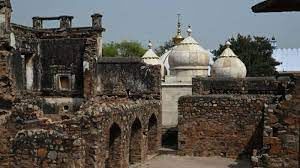
Why in News?
The Archaeological Survey of India (ASI) is set to initiate conservation works at Zafar Mahal in south Delhi’s Mehrauli.
Zafar Mahal
- Zafar Mahal, located in Mehrauli village, South Delhi, India, is considered the last monumental structure built during the fading years of the Mughal era.
- The palace was built in the 18th and 19th centuries, with a forlorn history due to the deportation of the last Mughal Emperor, Bahadur Shah Zafar II, by the British.
- The monument is now in a neglected and ruined state and locals often play cricket and gamble inside the protected monument.
History
- The Mughal dynasty ended after 332 years when the last Emperor Bahadur Shah Zafar II (1837–1857) was deported to Rangoon, Burma, now Myanmar from the imperial city of Delhi.
- The palace had graves in the precincts of Zafar Mahal built within a marble screen enclosure by Jahandar Shah for his father Bahadur Shah I and others who followed, and is a minor reflection of the history of the place.
- Bahadur Shah Zafar II, who wished to be buried in the precincts of the palace, was buried in Rangoon.
- The palace used to be visited by Bahadur Shah Zafar II for hunting during the monsoon season, and he was honoured here during the Phool Walon Ki Sair festival held in February/March.
Key Structures
- Zafar Mahal consists of the Mahal or the palace, built in the 18th century, and the entrance gate, reconstructed in the 19th century.
- The palace is a three-storied structure in red sandstone embellished with marble, and the gate is imposing with an 11.75 feet opening at the entrance.
- A masjid called the Moti Masjid, built by Bahadur Shah I, was also located within the palace precincts.
- The palace now sits in a dilapidated condition and its restoration is limited by the inadequate documents to deduce the original construction details.
Demolished or Illegally Occupied Structures
- Zafar Mahal used to be a huge palace consisting of many other structures that are no longer present or occupied by local residents.
- These structures include the Diwan-e-Khaas of Bahadur Shah Zafar, the house of Mirza Babur, the Baoli of Aurangzeb, the house of Mirza Nili, the Thana of Bahadur Shah Zafar, the house of Mirza Salim, and the Khwas Pura.
Source: Indian Express
GS-II
International Air Transport Association (IATA)
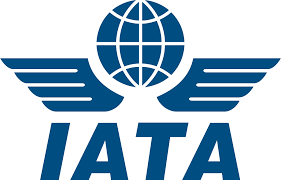
Why in News?
India is fast emerging as a key global aviation market, according to the latest market analysis report of the International Air Transport Association (IATA).
About International Air Transport Association (IATA):
- IATA is an international trade body founded in 1945 by a group of airlines.
- Currently, IATA represents some 300 airlines comprising 94% of the international scheduled air traffic.
- IATA members include the world’s leading passenger and cargo airlines.
- Headquarters: Montreal, Canada
- Mission: To represent, lead and serve the airline industry.
- IATA supports many areas of aviation activity and helps formulate industry policy on critical aviation issues, including environmental concerns.
What is International Civil Aviation Organisation (ICAO)?
- ICAO is an intergovernmental specialized agency associated with the United Nations (UN).
- It was established in 1947 bythe Convention on International Civil Aviation (1944) known as Chicago Convention.
- Headquarters: Montreal, Canada
- Functions:
- ICAO is dedicated to developing safe and efficient international air transportfor peaceful purposes and ensuring a reasonable opportunity for every state to operate international airlines.
- It sets standards and regulations necessary for aviation safety, security and facilitation, efficiency, and economic development of air transport as well as to improve the environmental performance of aviation.
- It also serves as a clearinghouse for cooperation and discussion on civil aviation issues among its 193 member states.
- It also promotes regional and international agreementsaimed at liberalizing aviation markets.
- It helps to establish legal standards to ensure that the growth of aviation does not compromise safety and encourages the development of other aspects of international aviation law.
Source: The Hindu
International Labour Day
Why in News?
International Labour Day, popularly known as International Workers' Day or May Day is observed on May 01 every year.
About International Labour Day:
- It is celebrated every year on 1 May to commemorate the struggles and sacrifices of the workers' and labours' movement.
- It is also known as May Day.
- It is celebrated in more than 80 countries, including India, Cuba, and China
- People in different parts of the world hold marches on this day to promote the rights of working-class people and to protect them from exploitation.
- History:
- The tradition of Labour Day dates back to 19th century America.
- On May 1st, 1886, workers in Chicago organized a strike to demand an eight-hour workday.
- However, workers across the US came together to demand their rights and to fight for better working conditions after a bomb exploded at a labour rally in Haymarket Square in Chicago, USA.
- In 1889, the International congress of socialist parties met in Paris and decided to celebrate Labour Day or Worker's Day on May 1.
- India connection:
- The first labour day was celebrated in India on May 1, 1923, in Chennai.
- The first May Day celebrations were organized by the Labour Kisan Party of Hindustan.
- It is celebrated by many different names in the various Indian states. For example, It is known as Kamgar Din in Hindi, Karmikara Dinacharane in Kannada, and Karmika Dinotsavam in Telugu.
Source: Times of India
Insurance Regulatory and Development Authority of India (IRDAI)
Why in News?
IRDAI (Insurance Regulatory and Development Authority of India) recently asked insurance companies to lay down social media guidelines for their employees.
About Insurance Regulatory and Development Authority of India (IRDAI):
- It is an autonomous and statutory body established under the IRDA Act 1999.
- It is the apex body that supervises and regulates the insurance sector in India.
- Objective: To protect the interests of policyholders, to regulate, promote and ensure orderly growth of the insurance industry in India.
- Nodal Ministry: Ministry of Finance
- Head Office: Hyderabad.
- Composition: IRDAI is a 10-member body- a Chairman, five full-time members, and four part-time members appointed by the Government of India.
- Functions:
- Fair regulation of the insurance industry while ensuring the financial soundness of the applicable laws and regulations;
- Frame regulations periodically so that there is no ambiguity in the insurance industry;
- Registering and regulating insurance companies;
- Protecting policyholders' interests;
- Licensing and establishing norms for insurance intermediaries;
- Promoting professional organizations in insurance;
- Regulating and overseeing premium rates and terms of non-life insurance covers;
- Specifying financial reporting norms of insurance companies;
- Regulating investment of policyholders' funds by insurance companies;
- Ensuring the maintenance of solvency margin by insurance companies;
- Ensuring insurance coverage in rural areas and of vulnerable sections of society;
Source: The Hindu
GS-III
Sustainable Development Goals (SDGs): India’s Progress Analysis
Why in News?
India’s Prime Minister Narendra Modi, while addressing the first meeting of Finance Ministers and Central Bank Governors under India’s G20 Presidency, expressed concern about the slowing down of Sustainable Development Goals (SDGs). Given India’s large population, the success of achieving these goals is crucial for global progress. While India has made progress towards achieving some SDG targets, there are concerns regarding others.
India’s progress on SDG’s
- Neonatal and under-five mortality: India is on target to meet the SDG indicators for neonatal and under-five mortality. Both indicators have substantially improved in the last five years.
- Full vaccination: India is on target to meet the SDG indicator for full vaccination.
- Improved sanitation: India is on target to meet the SDG indicator for improved sanitation. The country has made significant progress in this area in the last five years.
- Electricity access: India is on target to meet the SDG indicator for electricity access.
- Access to banking: The number of women having bank accounts has improved across a vast majority of the districts between the years 2016 and 2021.
- Adolescent pregnancy: The SDG indicator for eliminating adolescent pregnancy has improved across a vast majority of the districts between the years 2016 and 2021.
- Multidimensional poverty: The SDG indicator for reducing multidimensional poverty has improved across a vast majority of the districts between the years 2016 and 2021.
- Women’s well-being and gender equality: India has made progress in increasing mobile phone access, with 93% of households having access to mobile phones. However, only 56% of women report owning a mobile phone.
Lessons from COVID-19 Approach
- Leadership: Strong political leadership and responsive administrative structure are critical to success, and India’s COVID-19 response demonstrated that a mission-oriented ethos that provides adequate support for accomplishing district-level SDGs is urgently needed.
- Infrastructure and Coordination: India’s success with COVID-19 was largely possible both because of the existing digital infrastructure, as well as new, indigenous initiatives such as the Co-WIN data platform and the Aarogya Setu application. Following these examples, India must put in place a coordinated, public data platform for population health management.
- Targeted delivery: A targeted SDG strategy delivered at scale must be executed with the same timeliness of India’s COVID-19 relief package. Key to this relief programme was a mix of spending to provide direct in-kind and economic support, as well as measures aimed at revitalising the economy, small businesses, and agriculture.
Concerns regarding India’s progress towards achieving SDGs
- Unequal progress across districts: While India is on target to meet 14 out of 33 SDG indicators, the progress is not uniform across all districts.
- For example: neonatal and under-five mortality rates are on target for the country as a whole, but many districts are not on track to meet these indicators.
- Pace of improvement: The current pace of improvement is not sufficient to meet the SDG targets for 19 out of 33 indicators.
- For instance: despite a national policy push for clean fuel for cooking, more than two-thirds of districts remain off-target for this indicator.
- Gender inequality: India is facing significant challenges in achieving gender-related SDG targets.
- For example: no district in India has yet succeeded in eliminating the practice of girl child marriage before the legal age of 18 years. Also, despite the overall expansion of mobile phone access in India, only 56% of women report owning a mobile phone, with many districts remaining off-target for this indicator.
- Multidimensional poverty: Although India has made progress in reducing multidimensional poverty, many districts are still off-track to meet this SDG indicator.
- Environmental sustainability: India has made progress in some areas related to environmental sustainability, such as improved sanitation and access to electricity. However, the country is still off-target for indicators related to clean cooking fuel, water and handwashing facilities, and reducing greenhouse gas emissions.
Way ahead
- Implement targeted policies and programs that are aligned with the SDG goals, particularly for areas where progress has been slow or lacking.
- Improve the digital infrastructure, and create a coordinated public data platform for population health management.
- Ensure strong and sustained political leadership that is supported by a responsive administrative structure at all levels.
- Prioritize and accelerate efforts to address gender inequality and women’s well-being.
- Strengthen implementation and monitoring mechanisms to ensure timely and effective delivery of SDG policies and programs.
- Foster partnerships between government, civil society, and the private sector to mobilize resources and expertise to achieve SDG targets.
- Develop a decadal plan that outlines concrete steps and targets for achieving SDG goals in the next ten years.
Source: Indian Express
Issues with Great Nicobar Island (GNI) Project
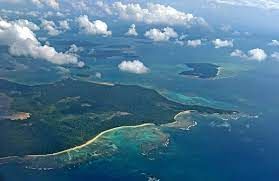
Why in News?
The National Commission for Scheduled Tribes (NCST) has now flagged alleged discrepancies with respect to the forest clearance granted for the ₹72,000-crore Great Nicobar Island (GNI) Project.
What is GNI Project?
- The GNI Project refers to the “Holistic Development of Great Nicobar Island,” a proposed mega project being piloted by NITI Aayog.
- The project aims to develop the southern end of the Andaman and Nicobar group of Islands in the Bay of Bengal by constructing –
- Transshipment port
- Dual-use military-civil international airport
- Power plant and
- A township over a span of 30 years on more than 160 sq. km of land, of which 130 sq. km is primary forest
Features of the Project
- Transshipment hub of the East: The proposed port will allow Great Nicobar to participate in the regional and global maritime economy by becoming a major player in cargo transshipment.
- Naval control: The port will be controlled by the Indian Navy, while the airport will have dual military-civilian functions and will cater to tourism as well.
- Urban amenities: Roads, public transport, water supply and waste management facilities, and several hotels have been planned to cater to tourists.
Significance of the project
(1) Economic significance
- Making India transshipment giant: The proposed port would allow GNI to become a significant player in cargo transshipment, as it is positioned equidistant from Colombo, Port Klang (Malaysia), and Singapore.
- En-route of busiest shipping lane: It located close to the East-West international shipping corridor that sees a vast amount of the world’s shipping trade.
- Huge source of revenue: The proposed ICTT can potentially become a hub for cargo ships travelling on this route.
(2) Strategic significance
- Securing IOR: The proposal to develop GNI has been on the table since the 1970s, and it has been highlighted repeatedly as a crucial element for national security and consolidation of the Indian Ocean Region.
- Critical shipping chokepoint: Great Nicobar is equidistant from Colombo to the southwest and Port Klang and Singapore to the southeast, the region through which a very large part of the world’s shipping trade passes.
- Oceanic outpost: The ANI is an oceanic outpost for continental India.
- Combatting Chinese presence: In recent years, the escalating Chinese presence in the Indian Ocean has added greater urgency to this imperative.
Issues with the Project
- Threat to Biodiversity: The construction of the port, airport, and township, and the influx of people that the project is expected to bring, are likely to result in habitat destruction, fragmentation, and degradation, which could threaten the survival of several species.
- Displacement of Indigenous Tribes: GNI is home to two isolated and indigenous tribes, the Shompen and the Nicobaris, who have lived on the island for thousands of years. The project could displace these tribes and disrupt their way of life and culture.
- Deforestation: The project is expected to result in the cutting down of an estimated 8.5 lakh trees in the island’s prehistoric rainforests, which could have a significant impact on the island’s ecology and biodiversity.
- Lack of Adequate Environmental and Social Impact Assessments: The project has received several easy clearances with uncharacteristic haste, raising questions about the adequacy of environmental and social impact assessments.
- Fragile Topography: Experts have raised several concerns relating to the tectonic volatility and disaster vulnerability of the islands, which have experienced nearly 444 earthquakes in the past 10 years. The tribal communities, who were displaced in the 2004 Tsunami, are still recovering from its impact.
Concerns highlighted by the NCST
(1) Discrepancies with FRA Compliance
- The island administration did not recognise or grant ownership of any forest land to local tribespeople as per FRA, a requisite step under the Forest Conservation Rules, 2017, before Stage-I clearance is granted.
- This is despite the fact that Rule 6(3)(e) of Forest Conservation Rules-2017 (FCR) requires that any diversion of forest land first requires the District Collector to recognise and vest rights to locals under the FRA.
- The legislation allows forest communities the right to control and manage the use of the forest land over which they hold titles, and their consent is mandatory for diverting it.
(2) Inconsistencies with Stage-I Clearance
- The Stage-I clearance for the project was granted in October 2022, two years after the application was received.
- Monthly progress reports show that the district administration did not process any claims over forest land under the FRA in the 26 months since project sanction.
- A Gram Sabha meeting was called with less than a day’s notice to villagers where a resolution was passed consenting to the diversion of forest land for the project.
(3) Withdrawal of Consent
- Weeks after the Stage-I clearance was granted, the Tribal Council at Campbell Bay withdrew the consent granted by the Gram Sabha.
- NCST alleged that the minutes of the meeting were typed after securing members’ signatures.
Source: The Hindu
|
38 videos|5293 docs|1118 tests
|
FAQs on UPSC Daily Current Affairs- 1st May 2023 - Current Affairs & Hindu Analysis: Daily, Weekly & Monthly
| 1. What is the significance of GS-I, GS-II, and GS-III in UPSC exams? |  |
| 2. What is the importance of daily current affairs in UPSC preparation? |  |
| 3. How can I stay updated with daily current affairs for UPSC exams? |  |
| 4. Are there any specific topics or areas that I should focus on while studying for GS-III? |  |
| 5. How can I effectively prepare for the GS-I, GS-II, and GS-III papers in UPSC exams? |  |



